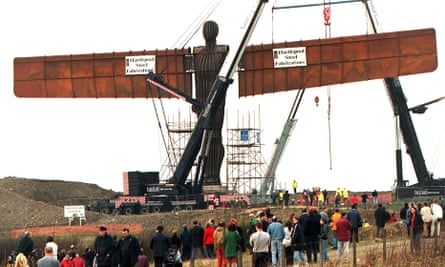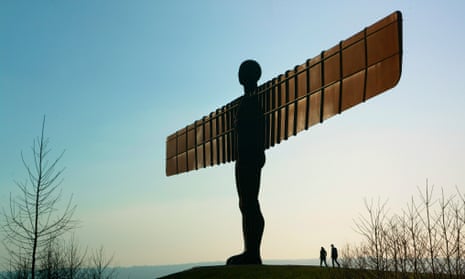The Angel of the North, the artwork that helped put Gateshead on the map globally and which is celebrating its 20th anniversary this week, could have been nothing more than an idea on a sketch pad had it not been for the actions of one councillor.
For many years Gateshead council had been pursuing a plan to bring art to the people. Their attention turned to a site next to the A1, which, with views all around, was seen as the entrance to Gateshead. Some believed the installation there needed to be something big and special.
One of those people was the Labour councillor Sid Henderson, then chairman of Gateshead council’s libraries and arts committee.
The councillors on the Art in Public Places panel had to choose one of two artists for the project – Antony Gormley or Sir Anthony Caro. On the day of their meeting in 1994 only three of the six panel members turned up to vote. One picked Gormley and the other Caro, meaning the deciding vote fell to Henderson.
Soon after the decision on Gormley was made, Henderson faced fierce criticism from other councillors and members of the public who claimed the Angel – 20 metres tall with a 54-metre wingspan – was a waste of money and, at its site at Low Eighton, would spoil the view.

Speaking from his home in Rowlands Gill, Henderson, now 87, said he looked back on the decision with immense pride as he credited the Angel with kickstarting regeneration across the north-east of England.
“I always believed in the Angel because I believed as a nation we were becoming more and more standardised without any distinction between areas,” he said.
“Once upon a time we had more individuality as cities and towns, and the things we had been good at like ship building and mining had all gone. So for me there was more to it than just doing a nice big angel. It was drawing attention to Gateshead saying come and have a look, we are more than you think. And I’m convinced the Angel was a catalyst for starting so much of the regeneration of Gateshead and Newcastle, especially down on the Quayside, like the Baltic and the Sage.”
Henderson, a former headteacher, described the opposition to the project endured by the council, but said that looking at how “loved” the piece was now he was very proud of the Angel.
He added: “The site is magnificent and so visible, it changes colour through the day depending on the light, and is truly a piece of art. And now Gateshead is known as the place of the Angel of the North and I’m proud and chuffed to bits to have been involved.”

Comments (…)
Sign in or create your Guardian account to join the discussion